Gravel gardens combine crisp texture with remarkable practicality, offering drainage, weed suppression, and a dramatic canvas for drought-loving plants. Well-chosen stone sizes lock together like puzzle pieces, forming an airy mulch that stores moisture while keeping roots cool. Low-maintenance by nature and adaptable to lots of climates, gravel beds prove that sustainable design can still feel lush and welcoming. Sprinkled with aromatic herbs, animated by grasses that sway in the wind, or lit up for evening gatherings, these spaces invite everyday relaxation without demanding constant upkeep. Explore the following fresh possibilities to see how gravel can transform corners large or small into vibrant outdoor rooms.
1. Xeriscape Gravel Border That Sips Water
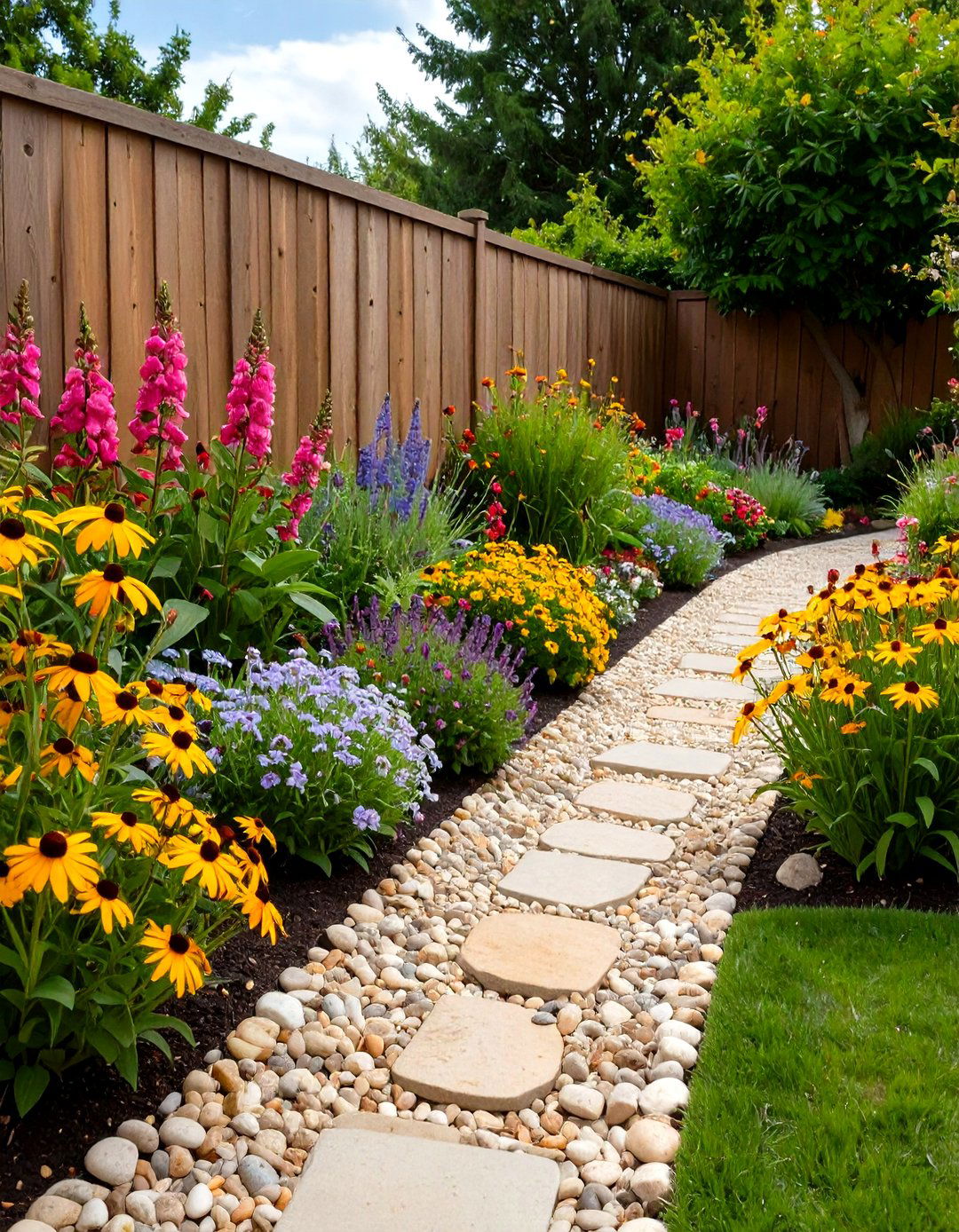
A sweeping gravel garden border makes an instant xeriscape, framing paths or lawns with drought-tolerant color. Begin by removing turf, laying a breathable membrane, then spreading a 5 cm layer of angular chips that lock tight underfoot. Fill pockets with resilient perennials such as penstemon, black-eyed Susan, and aster that shrug off dry spells and tempt pollinators. These waterwise choices slice irrigation needs by as much as 50 percent while blooming for months on end. A gravel mulch also slows evaporation and stifles weeds, giving you more time to enjoy the view instead of pulling seedlings.
2. Mediterranean Herb Gravel Bed Bursting With Aroma
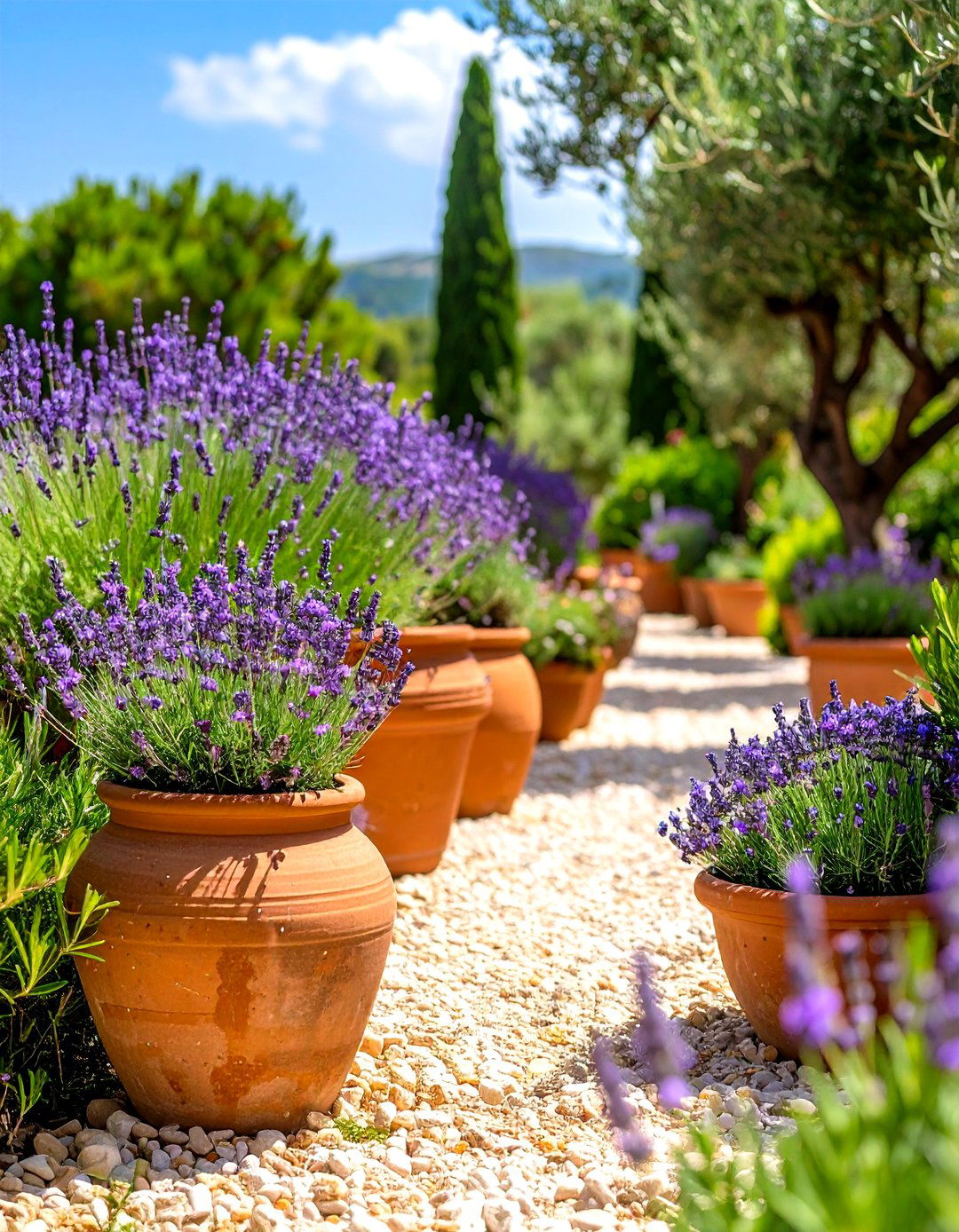
An inviting Mediterranean-themed gravel garden celebrates scent as much as style. Sink pockets of gritty compost through the stone, then tuck in lavender, rosemary, and compact olive saplings that relish free-draining soil. The silver foliage pops against pale gravel and releases fragrance whenever you brush past. Mulched stone prevents splash-back soil, so leaves stay pristine for kitchen harvests and herbal teas. Thanks to heat-reflective surfaces, essential oils intensify, rewarding even brief strolls with heady perfume. Finish with a weathered terracotta urn to echo sun-baked coastal courtyards without ever leaving home.
3. Japanese Zen Gravel Corner for Calm Reflection
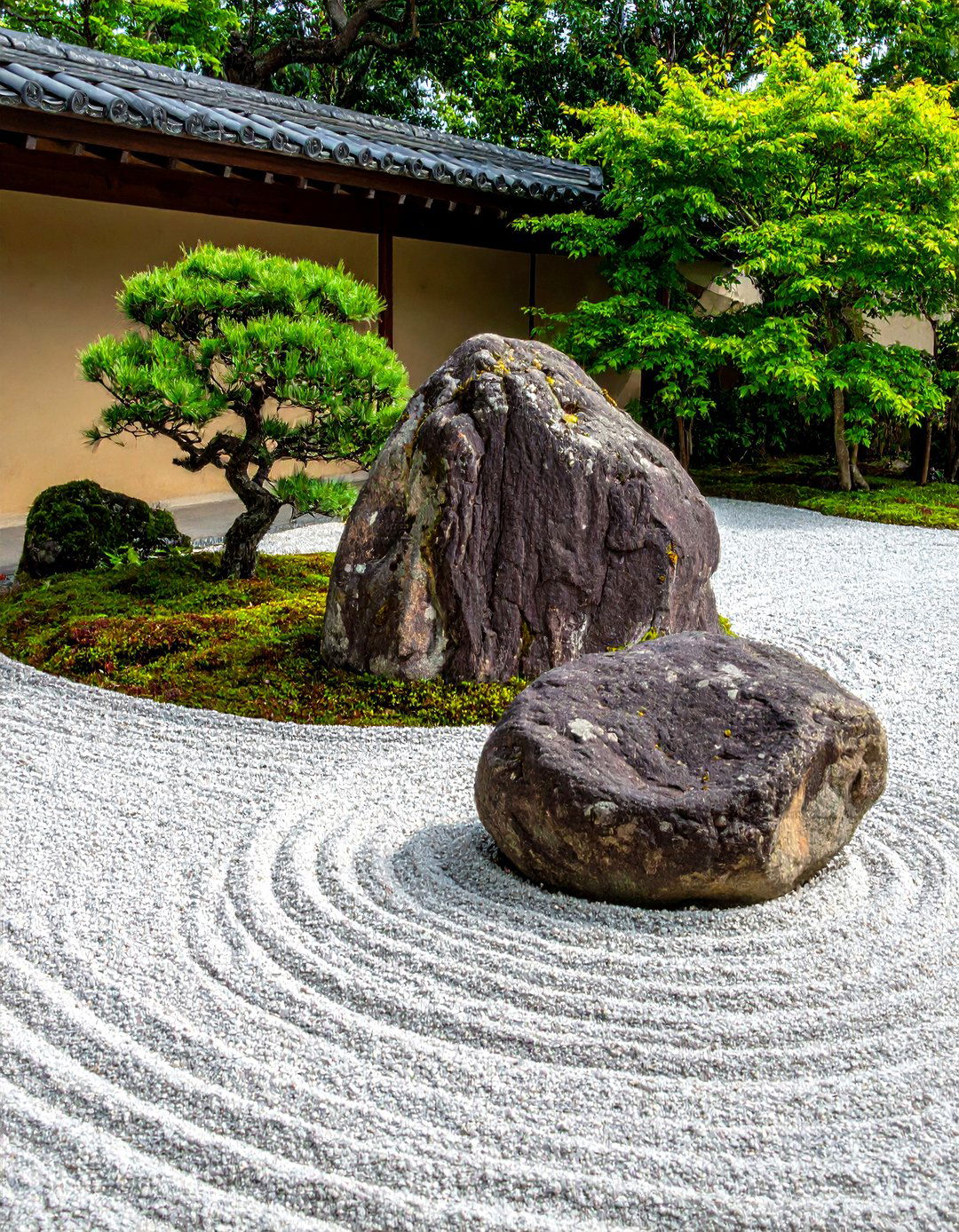
For quiet contemplation, carve out a micro Zen gravel garden beside a porch or under a maple. Rake fine, chipped stone into rippling patterns that mimic flowing water, placing a single boulder or lantern as the focal “island.” Choose angular gravel 4–6 mm wide so swirls hold their line yet stay easy to restore after rain. Rounded pebbles feel too loose for crisp designs, so swap to sharper chips for satisfying edges. Limit plants to a dwarf pine or sculpted moss to let negative space do the talking and invite mindful pauses with every pass.
4. Permeable Gravel Driveway That Drinks the Storm
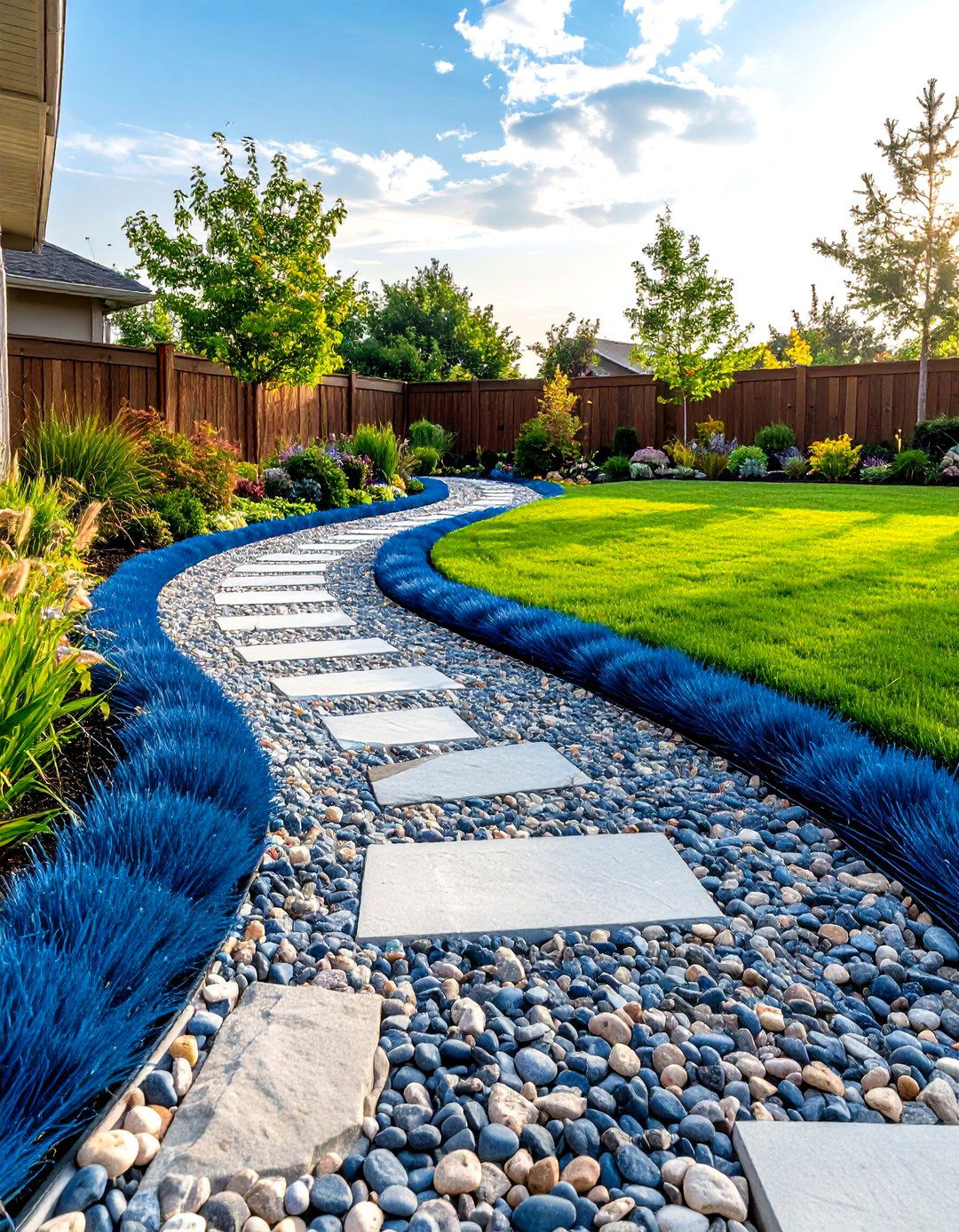
Replace impervious asphalt with a gravel garden driveway that quietly tackles runoff. Beneath a 10 cm layer of compacted stone, install stabilizing grids or porous pavers so tires never rut. Rain filters through the gaps, recharging groundwater instead of racing to storm drains. Studies show permeable surfacing can slash peak runoff volumes, easing local flooding and erosion. Bonus: lighter-colored chips stay cooler underfoot and reflect evening light back toward the house. Edge the drive with tufting blue fescue for a cohesive, car-friendly entrance that’s kinder to waterways.
5. Gravel Swale and Rain-Garden Duo
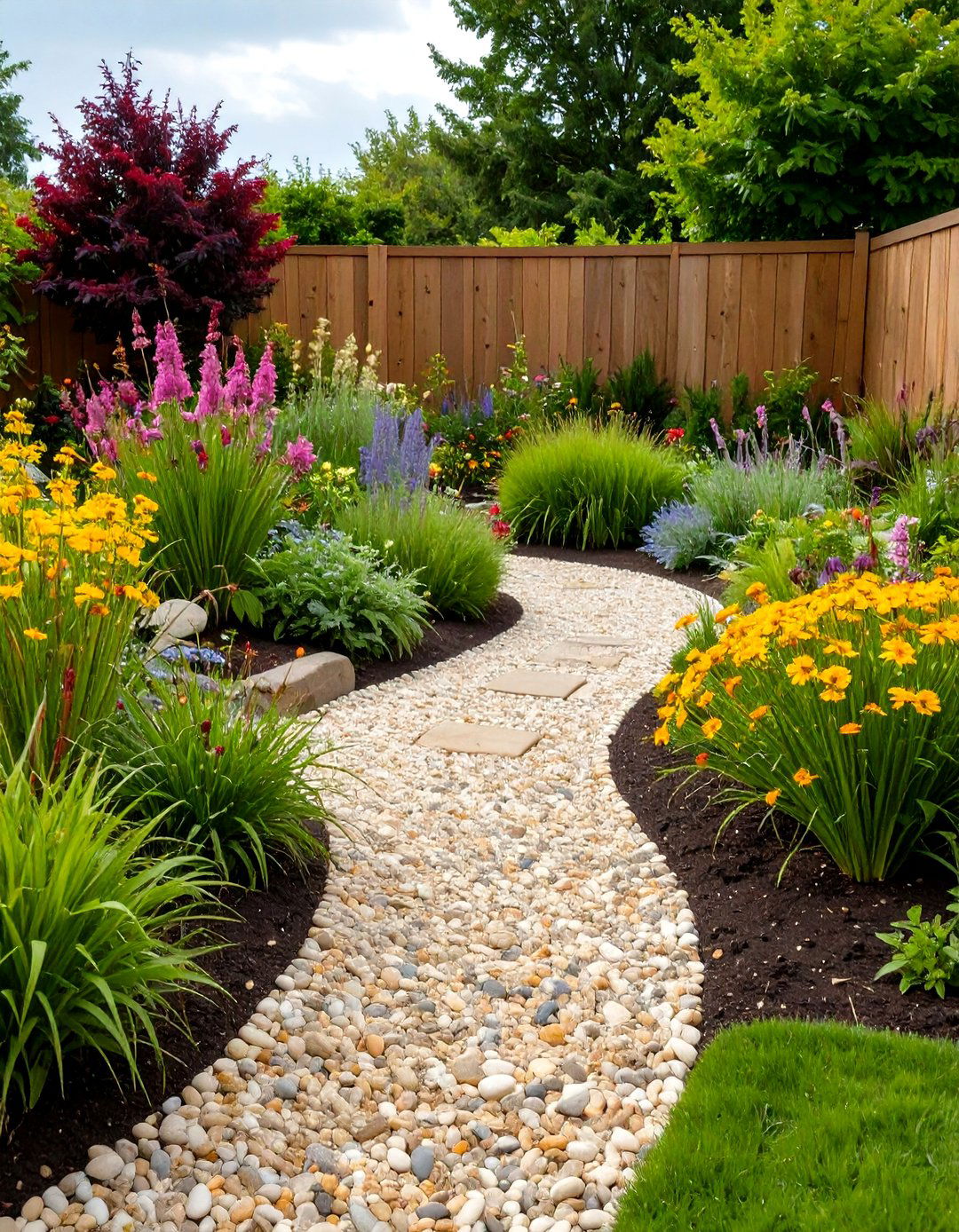
Channel roof water into a shallow, stone-lined swale that snakes through your gravel garden, slowing flow and letting it soak in. Layer coarse gravel at the base, then fill pockets on the berm with moisture-tolerant natives such as Joe-Pye weed or switchgrass. During downpours, the channel behaves like a mini stream; in dry spells, it returns to decorative dry riverbed. The combination manages stormwater naturally while adding sculptural drama and seasonal movement. Use larger river rock along the center to hint at past currents and guide the eye through the landscape.
6. Gravel Fire-Pit Lounge for Starry Nights
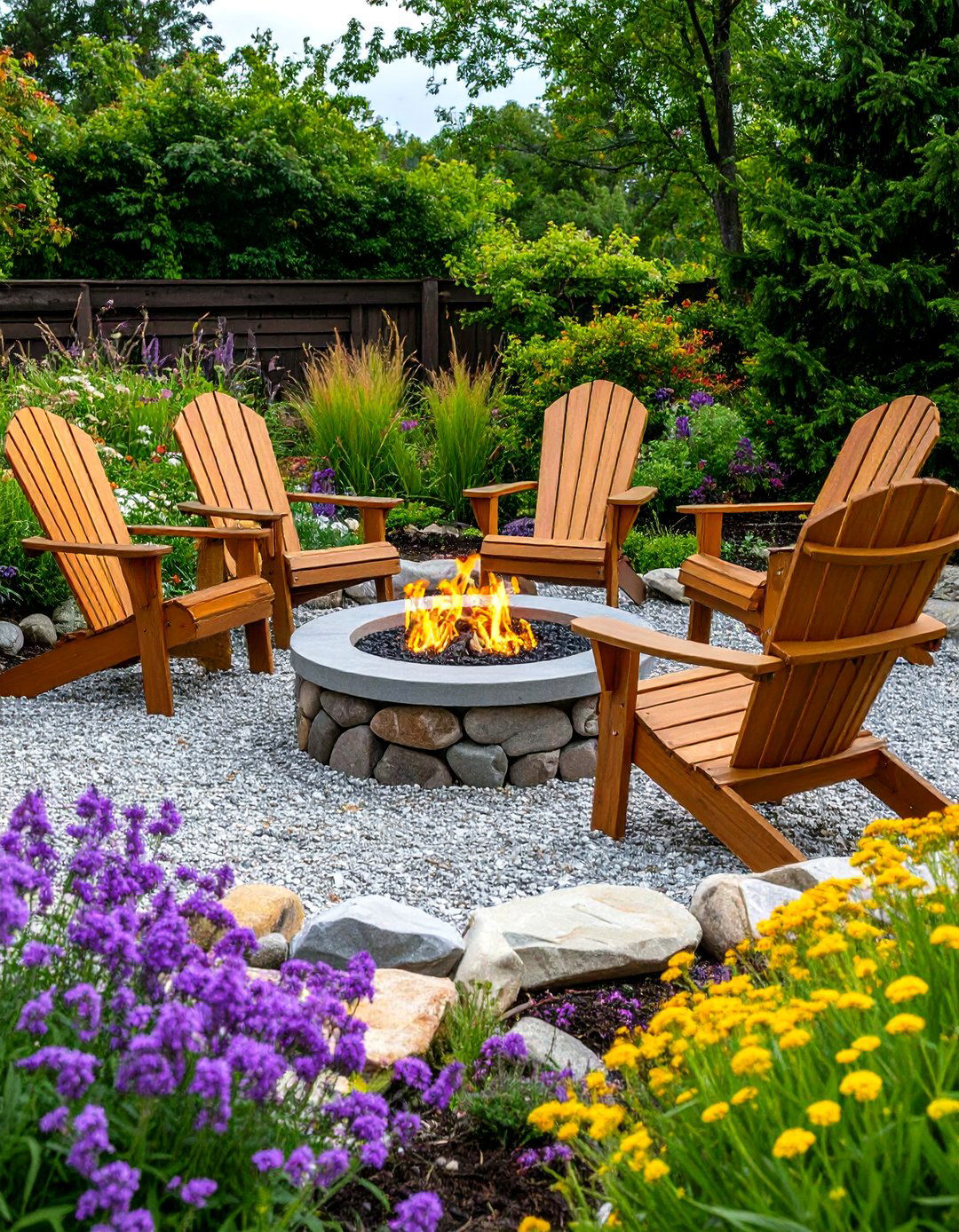
Few weekend joys beat gathering around a crackling flame on a circular gravel pad. A 3-meter-wide stone area cushions sparks, drains rainwater, and sets furniture legs stable. Surround the pit with low Adirondack chairs and add a ring of native yarrow or catmint to weave flame colors into the planting. Because gravel allows oxygen to reach underlying soil, roots of nearby trees avoid suffocation—a common patio flaw. When sparks settle, rake the surface to refresh patterns and keep the space looking photo-ready without pressure-washing.
7. Light-Washed Gravel Pathway That Guides Safely
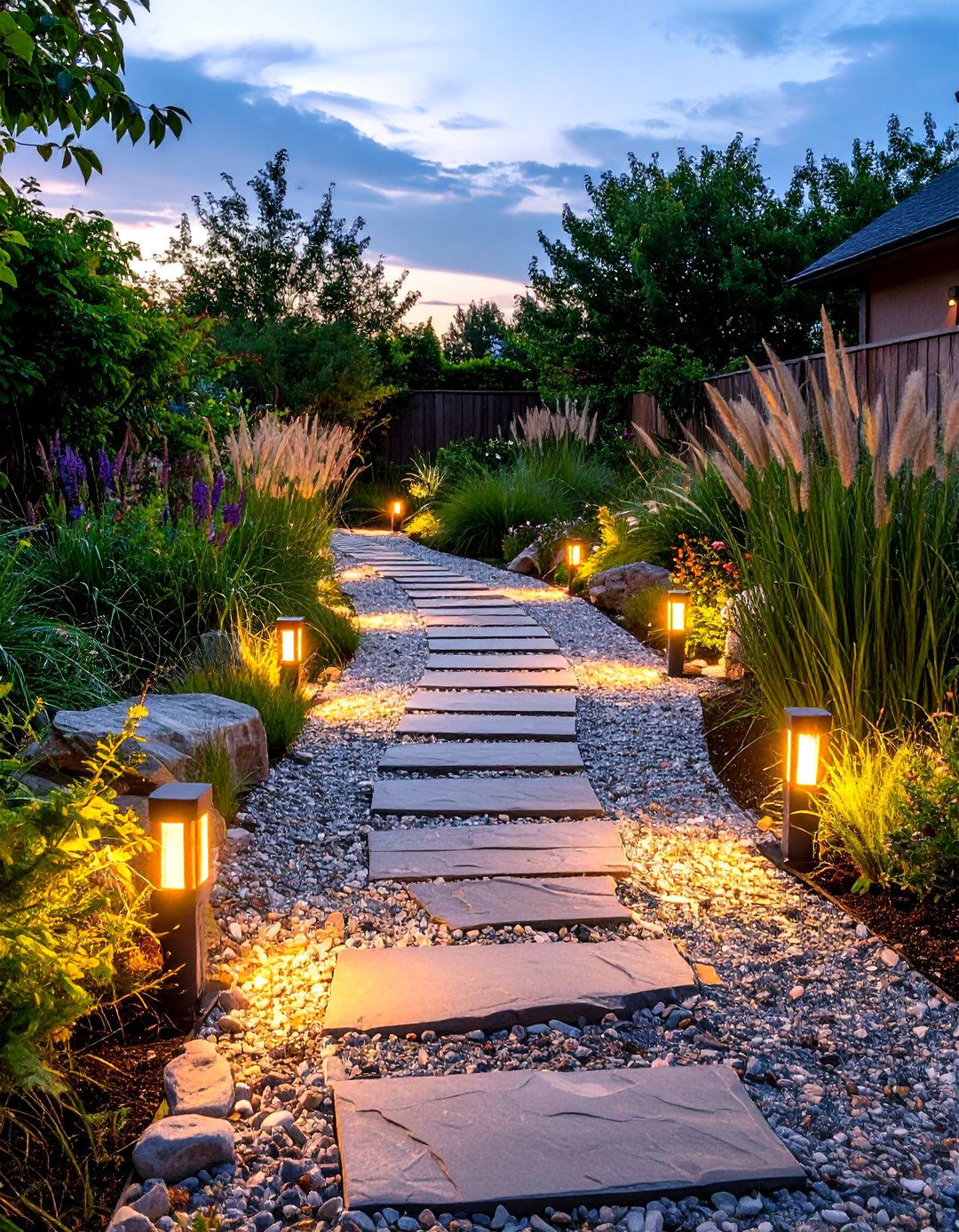
Unlike solid paving, a gently crunching gravel path instantly signals you’re home. Dig 10 cm deep, lay a compacted base, then top with 8 mm angular gravel so feet glide, not sink. Fold in low-voltage or solar uplighters every few meters, angling beams toward specimen grasses for night-time drama. Lighting specialists note that uplighting and subtle backlighting lend depth, while path lights protect ankles without ruining starlight. The textured stone reflects glows better than dark mulch, creating a floating ribbon effect as dusk falls.
8. Wildlife-Friendly Gravel Nook Buzzing With Life
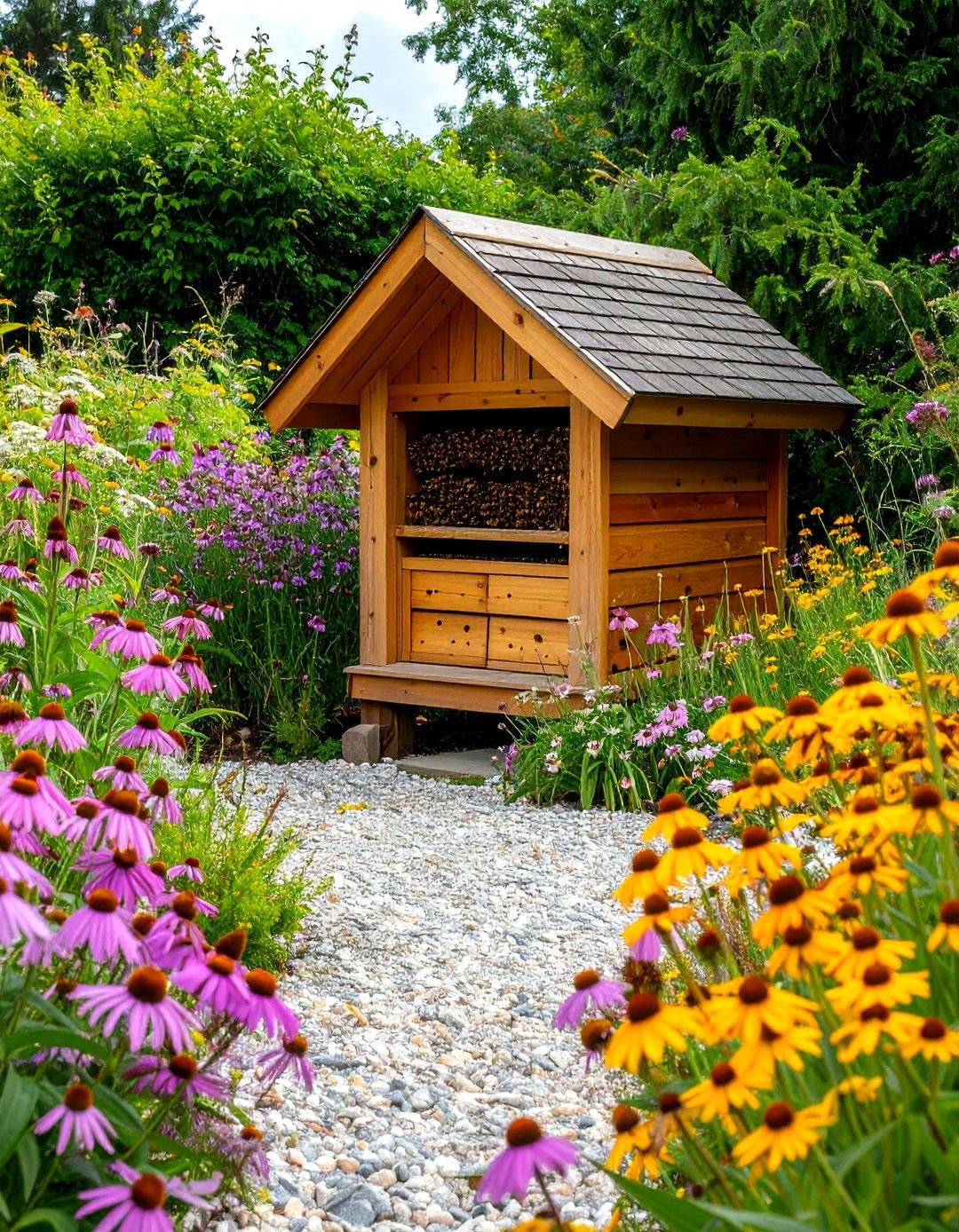
Carve out a compact gravel garden pocket stocked with region-appropriate nectar plants to become a stopover for bees and butterflies. Drifts of native asters, coneflowers, and sedums nestle into the stones, offering bloom succession from spring through frost. Place a shallow water dish atop a flat rock so birds can sip safely, and tuck a bee hotel into a sunny fence post. Gravel’s warmth speeds insect emergence, while its gaps let self-seeders find purchase without creeping into lawn. The result: a low-mow mini-meadow humming with color and life.
9. Gabion-Edged Gravel Seating Area
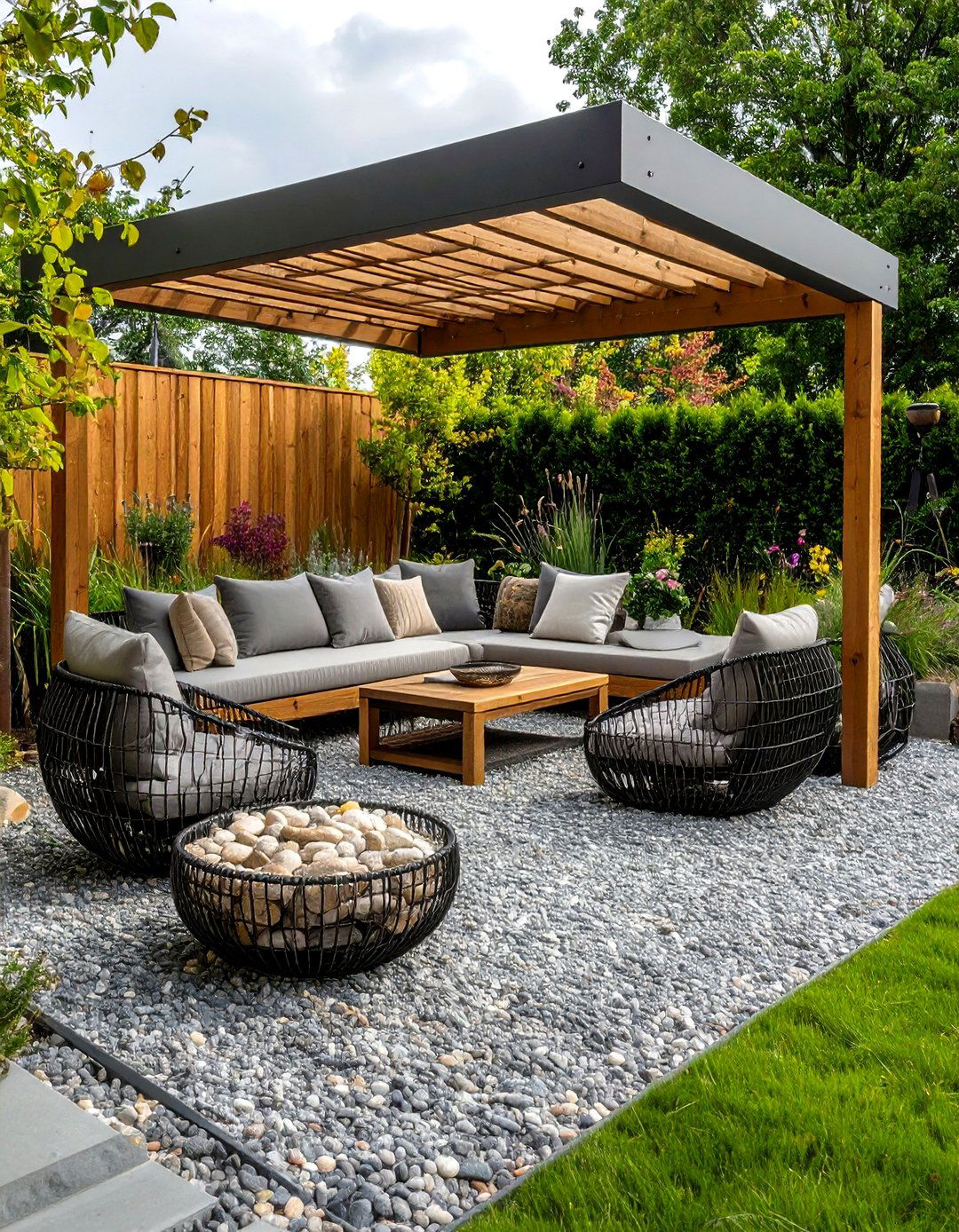
Give your gravel garden extra character by framing a patio with cube-shaped gabion benches packed with local stone. The wire cages double as retaining walls, define zones, and pair flawlessly with the loose aggregate underfoot. Top a low gabion with timber planks for instant seating that resists rot and echoes rustic lodges. By repeating the same rock inside baskets and as surface mulch, you achieve an effortless, cohesive look that reads both rugged and refined.
10. Gravel and Pot Showcase for Instant Height
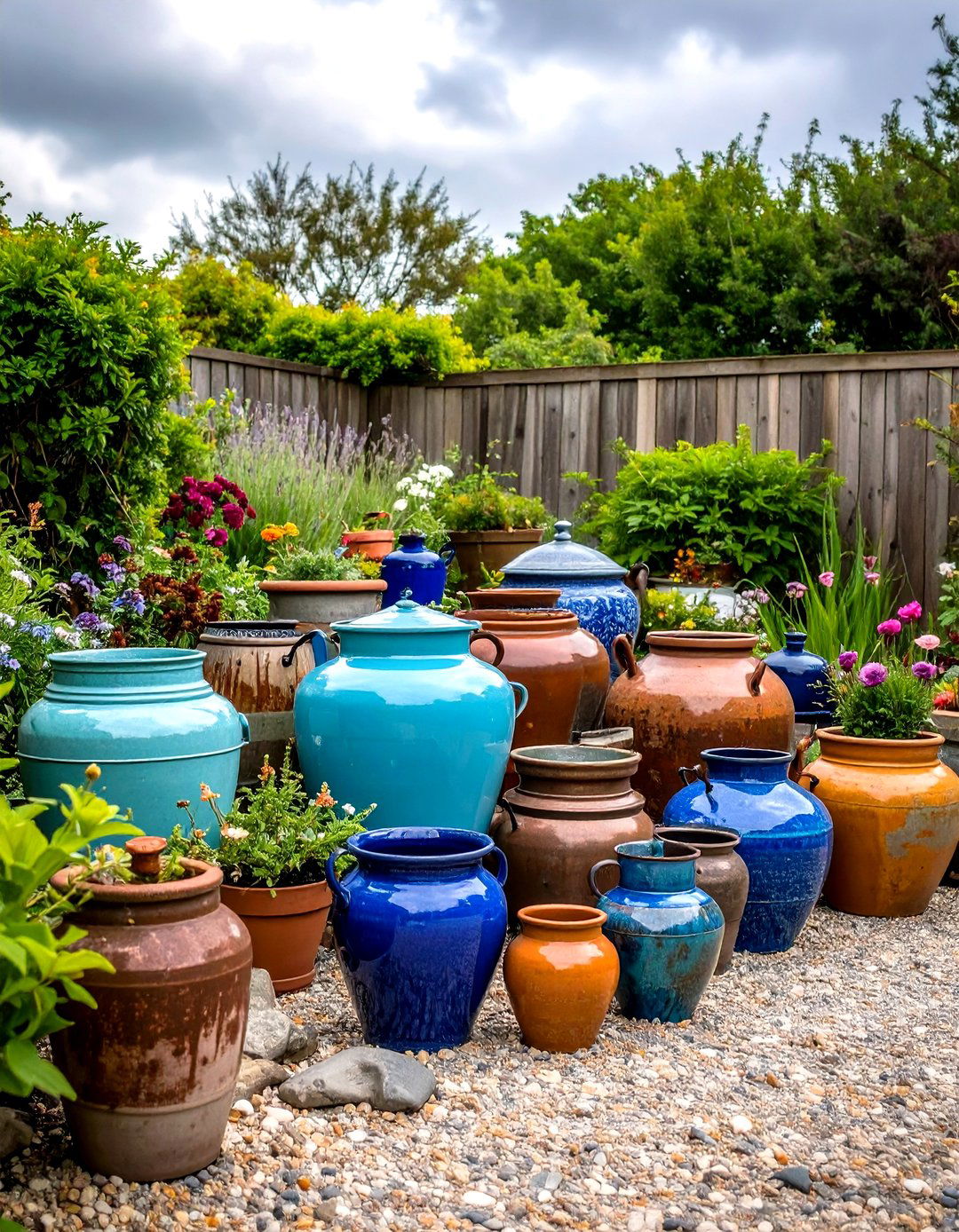
Containers pop against neutral gravel, letting colors and textures shine without grass distractions. Cluster tall planters beside squat bowls, mixing glazed ceramics with weathered metal to amplify contrast. Gravel masks drip marks, offers perfect drainage, and keeps weeds from sneaking behind pots. Designers suggest picking stone in a shade that complements—not matches—your favorite vessel to accentuate silhouettes. Swapping displays each season becomes easy: just lift, rake smooth, and set new stars in place.
11. Monochrome Gravel Palette for Modern Minimalism
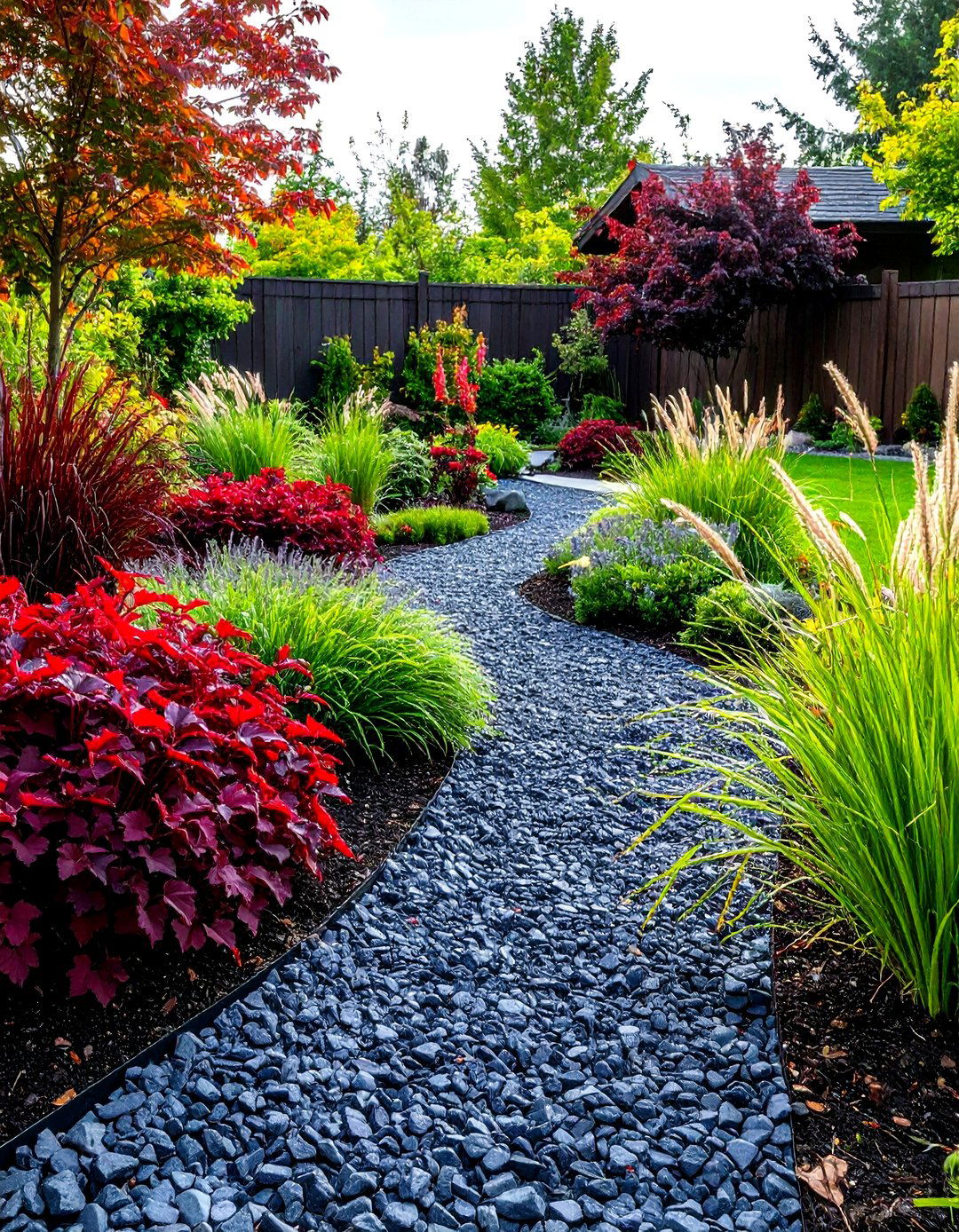
A single gravel color can pack as much punch as wild mixes when you lean on foliage contrast. Try charcoal chips around bright-green grasses or pale limestone beneath burgundy heuchera. A restrained palette calms small spaces, making courtyards feel larger and uncluttered. Because stone arrives washed and graded, you’ll enjoy an instant polished surface the day it’s spread—no waiting for moss or mulch to settle. Accents like a stainless-steel water bowl or sculptural agave reinforce the modern vibe without chasing seasonal bloom schedules.
12. Gravel Mulch Shield for Slug-Prone Beds
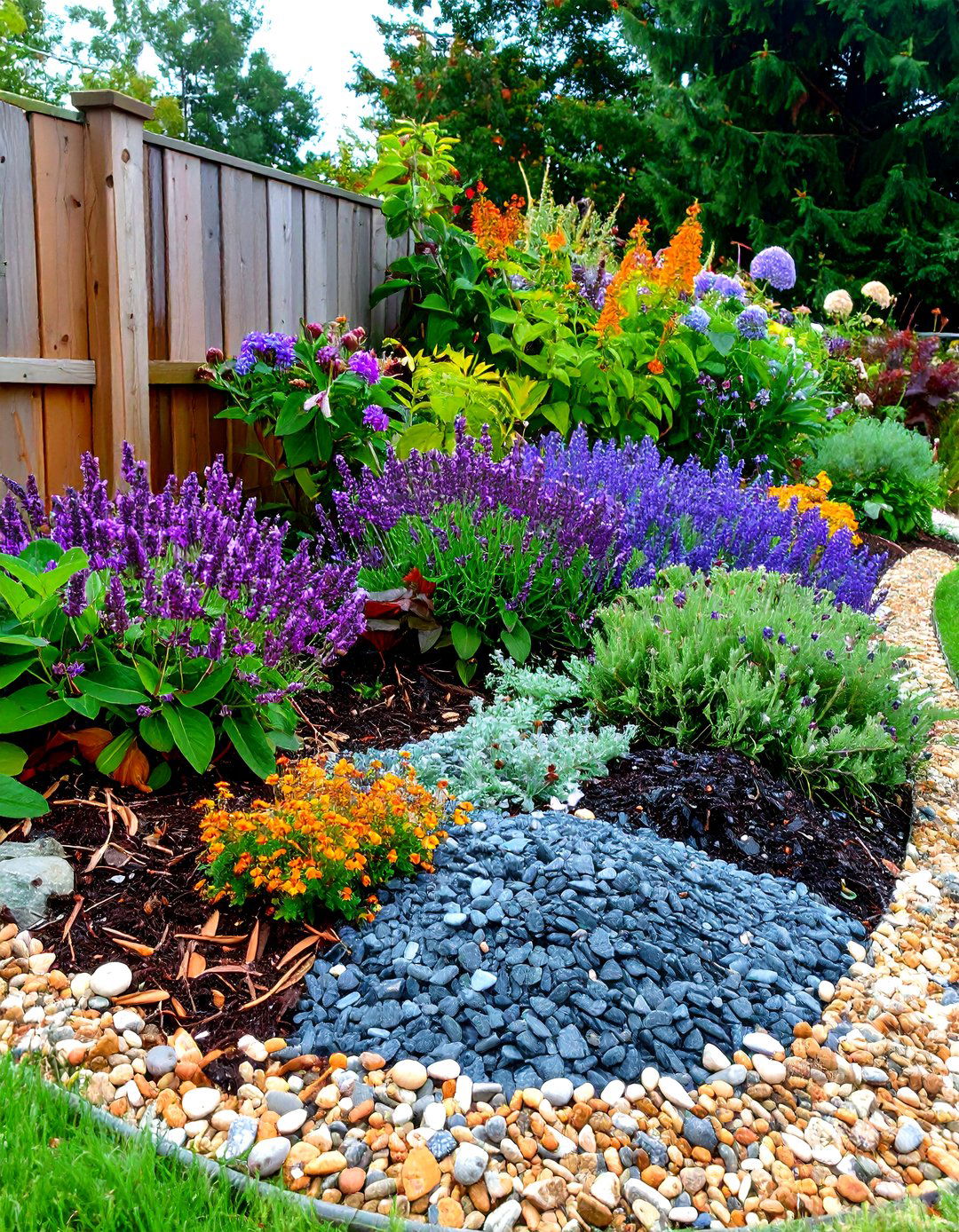
If mollusks munch new shoots, try ringing perennials with a sharp, gritty gravel garden collar. Rough edges deter slugs from crossing, while the porous layer stops leaves from hugging damp soil. Garden studies show choosing mulch carefully can reduce slug habitat dramatically, cutting damage without chemicals. Periodically fluff the gravel to break mini-tunnels and keep defenses high. Combine this strategy with evening hand-picks for a double hit against slimy invaders.
13. Gravel and Ornamental Grasses That Dance in Wind
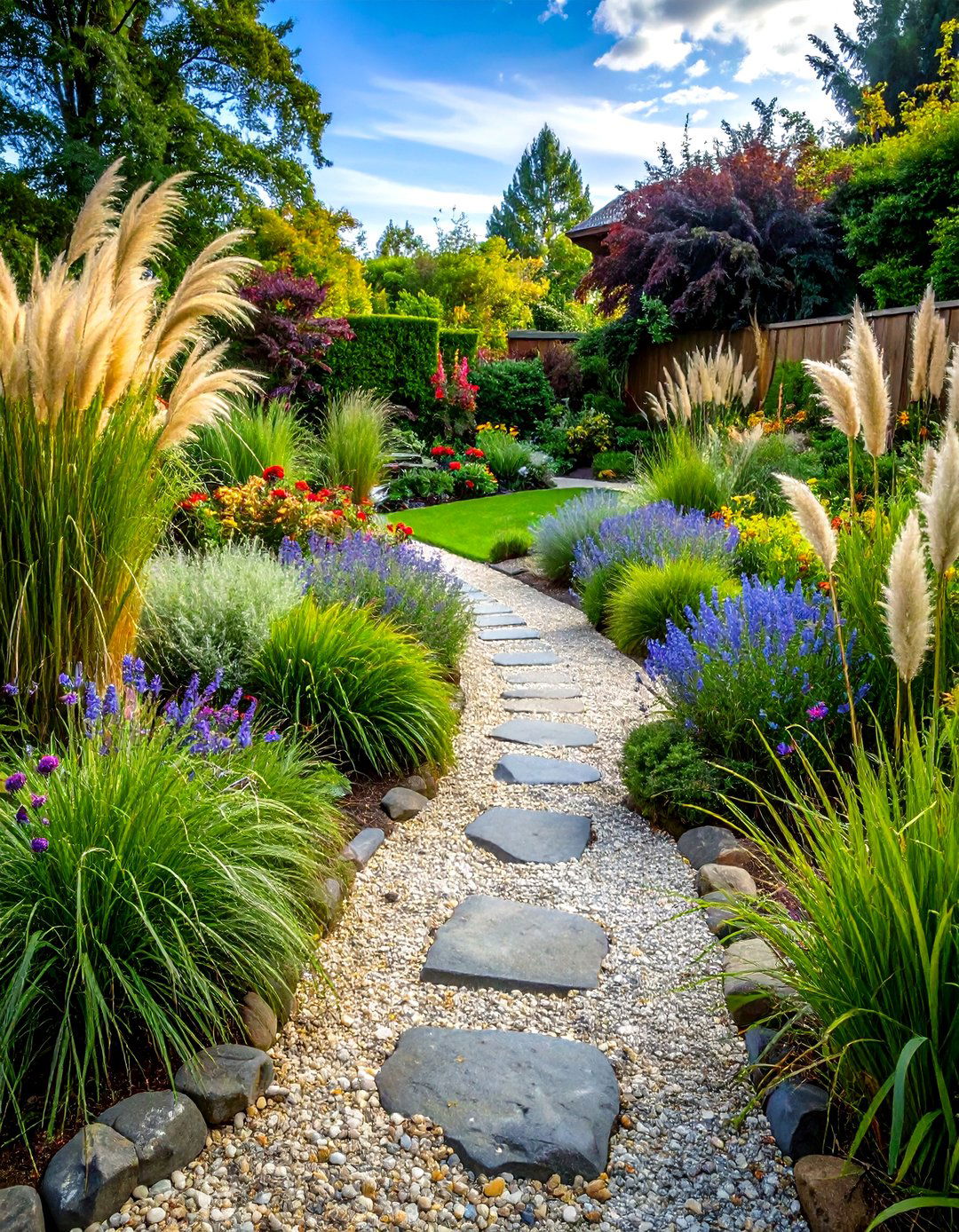
Few plant pairings wow like upright ornamental grasses emerging from a sea of pebbles. Stipa gigantea, blue fescue, and feather reed grass adore lean, free-draining ground and sway theatrically at the slightest breeze. In autumn, seed heads backlit by low sun transform the gravel garden into molten gold. Cut clumps down in late winter, leaving roots undisturbed beneath the protective stone blanket for easy, no-dig care.
14. Gravel Patio Dining Zone

Transform a neglected corner into an al-fresco dining terrace by leveling soil and topping with 10 cm of compacted gravel. The forgiving surface means chair legs won’t wobble, and any spilled drink filters away instantly. Add a chunky wooden table, string lights overhead, and flank the perimeter with aromatic thyme or oregano to perfume evening meals. Because gravel absorbs sound, conversation stays intimate even when kids play nearby.
15. Spiral Maze of Gravel for Playful Interest

Channel garden whimsy with a low, walkable gravel labyrinth cut into lawn or meadow. Mark the spiraling path with contrasting stone hues—perhaps pale limestone against dark basalt—to guide footsteps. Besides encouraging slow strolls and childlike wonder, the pattern creates microclimates: inner rings stay slightly warmer, perfect for alpine groundcovers. Maintenance remains simple: occasional raking realigns edges, and weeds struggle to root in the compacted substrate.
16. Gravel Water-Feature Mirror

Pair cool stone with shimmering reflections by nestling a stainless-steel dish or shallow pond into a gravel bed. Landscape lighting experts highlight “mirroring,” where uplights around water bounce soft glows into surrounding plants, doubling night-time sparkle. The permeable gravel lip absorbs splashes, prevents mud, and offers safe footing for maintenance. Even a modest 60 cm basin grants birds a drinking spot while lending tranquil sound to small courtyards.
17. Gravel Rockery for Heat-Loving Succulents
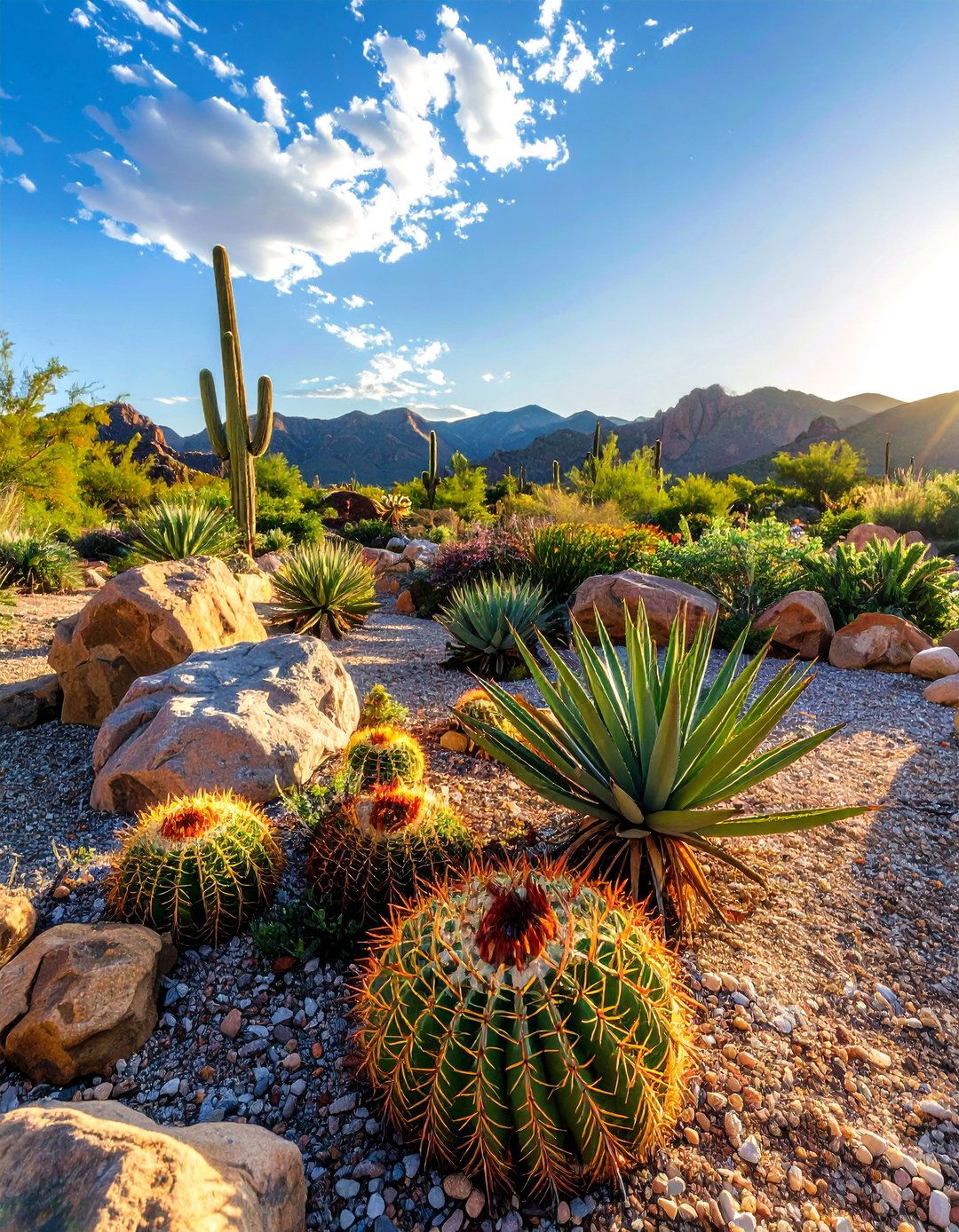
Mound coarse rubble, then drape it with a veil of smaller gravel to mimic mountainous scree—ideal for hens-and-chicks, ice plant, and dwarf yucca. These sun worshippers hate wet feet, and the stony slope whisks rainfall away faster than standard beds. Drought-proof foliage stores water, letting the display sail through holidays without a hose. Dot in shards of driftwood or rusted metal to accentuate the rugged, desert-inspired aesthetic.
18. Gravel Courtyard With Climbing Accents
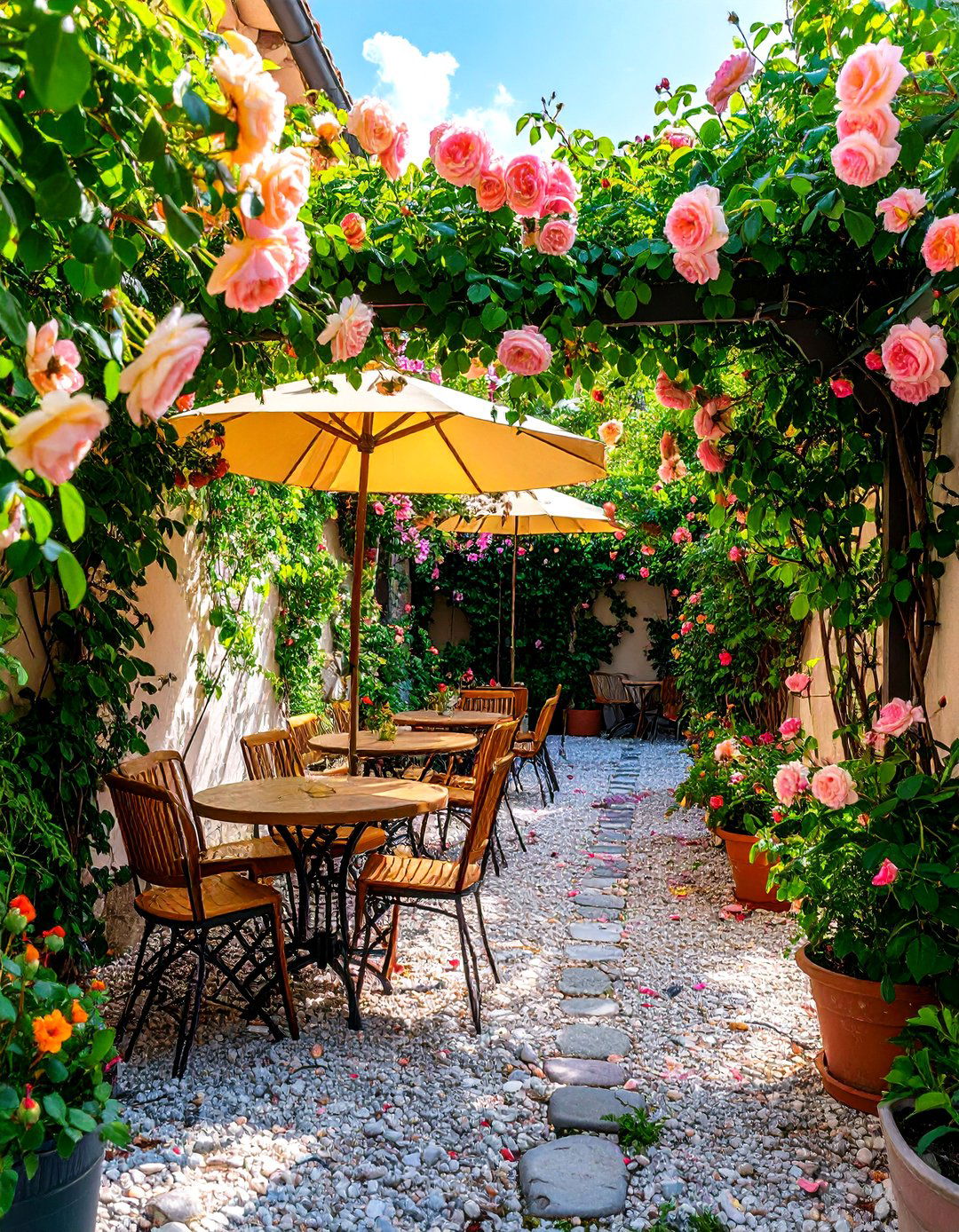
Combine vertical and horizontal interest by laying a gravel courtyard beneath trellis-trained jasmine or climbing roses. The stone base ensures tidy footing for café tables while reflecting warmth back onto vines, speeding flavorful blooms. Plant feet stay cool beneath the porous mulch, reducing heat stress during midsummer peaks. Add a simple drip line snaked beneath the gravel to hydrate deeper roots without wetting leaves, cutting mildew risk.
19. Gravel Atrium Hosting Container Citrus
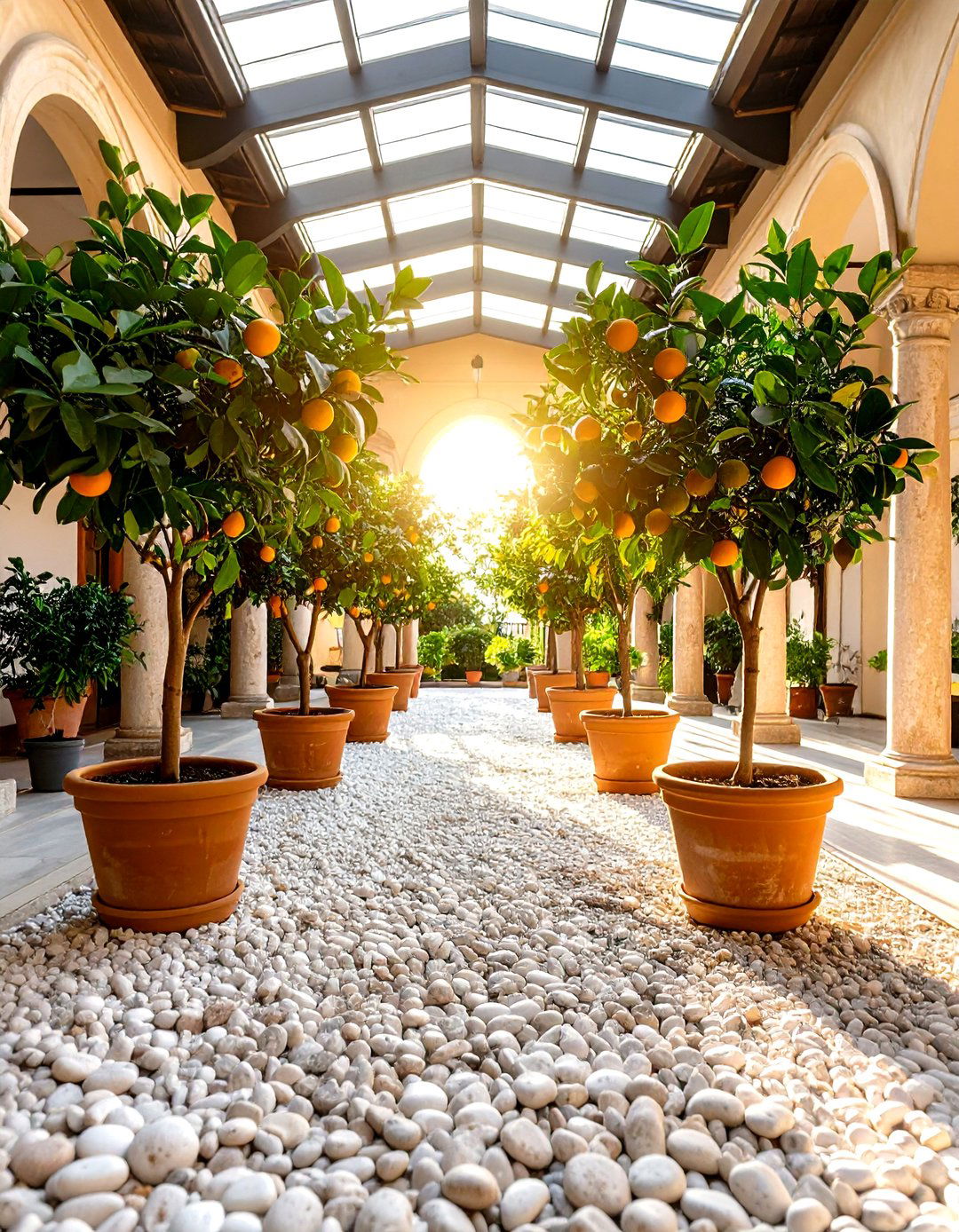
Where winters stay mild, roll potted lemons or kumquats onto a sunny gravel atrium. Citrus loves bright light and needs excellent drainage, both delivered by raised containers on stone. Gravel evens out micro-watering mishaps by wicking excess moisture away from saucers. Cluster the planters in odd numbers, then scatter white river pebbles between to bounce extra sunshine onto ripening fruit and contrast glossy green leaves.
20. Lavender Walkway Through a Fragrant Gravel Garden
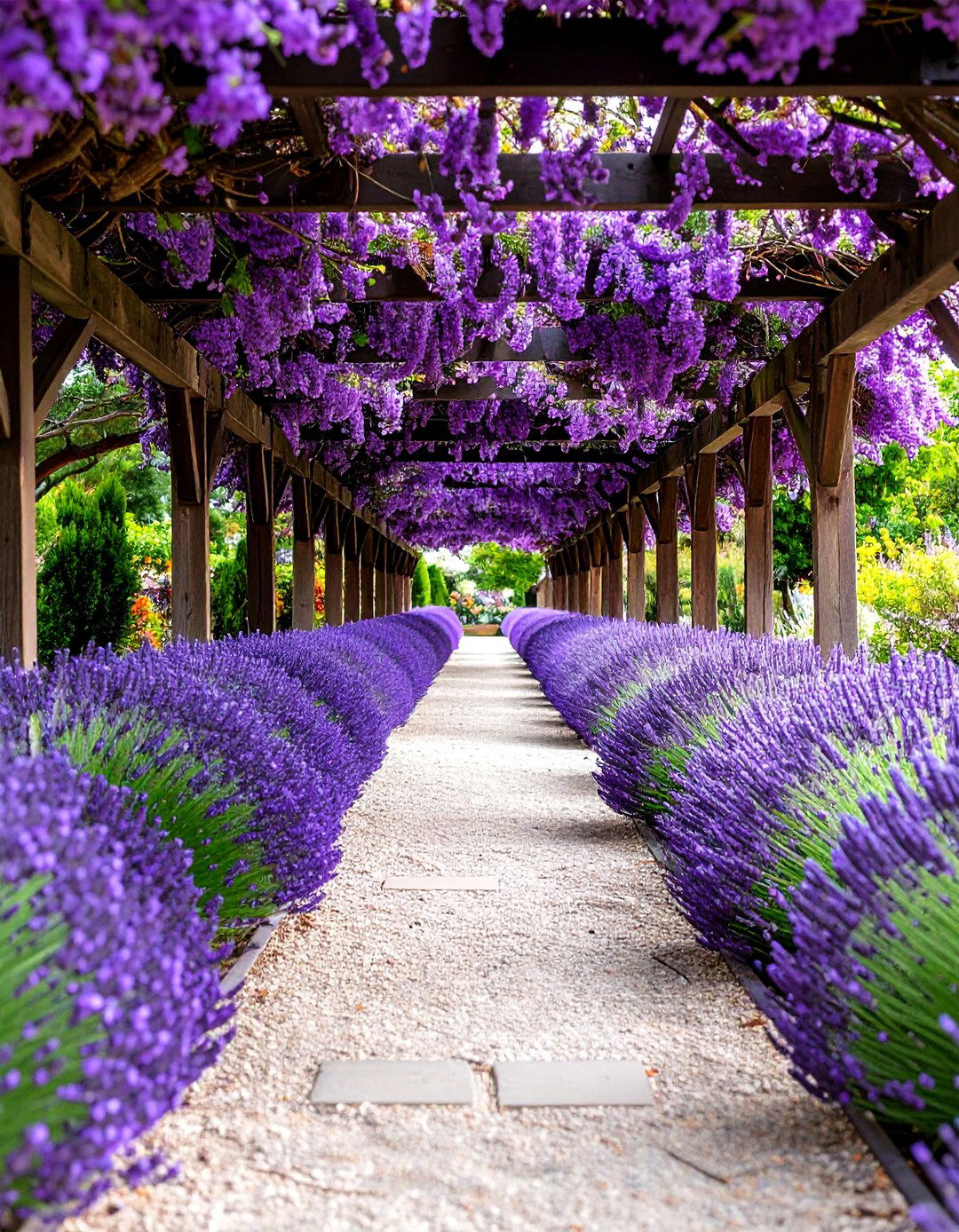
Line both sides of a narrow path with alternating rows of English and French lavender for year-round perfume. Gravel mulch keeps crowns dry in winter and amplifies solar heat, the secret to robust oil production and vivid bloom color. Regular cutting of spent spikes drops seeds directly into the stone, creating volunteer seedlings that thicken the hedge over time with minimal effort. Snap a bundle each trip past, then enjoy the soothing scent long after the stroll.
Conclusion:
Whether you crave water-wise planting, storm-ready surfaces, or after-dark ambience, a gravel garden can deliver big style with modest effort. By pairing free-draining stone with resilient flora, you gain a landscape that drinks rain slowly, discourages weeds, and stays camera-ready all year. From Zen corners to sociable fire pits, each idea above shows how thoughtful gravel use marries beauty and sustainability—inviting you outdoors today, tomorrow, and for seasons to come.



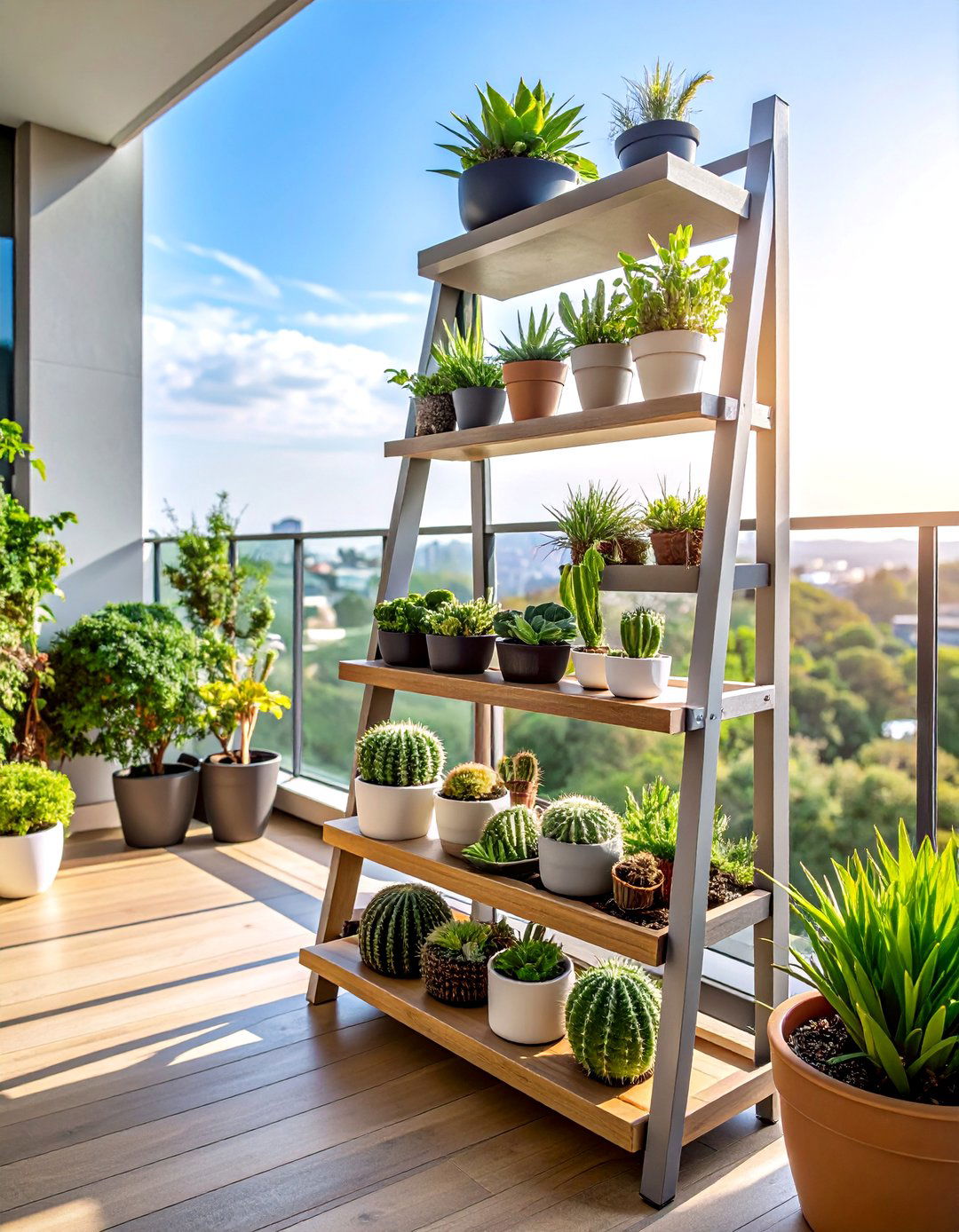
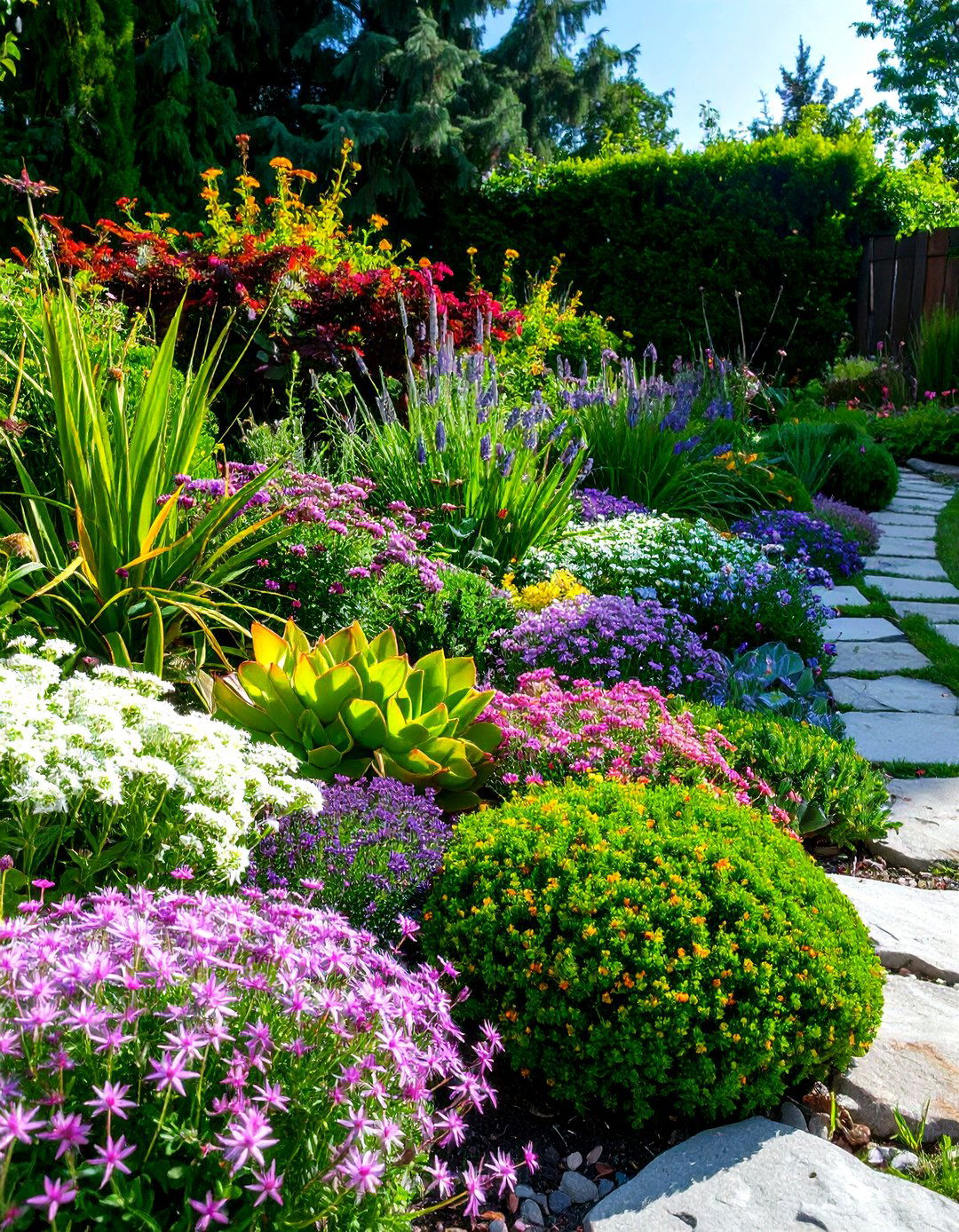
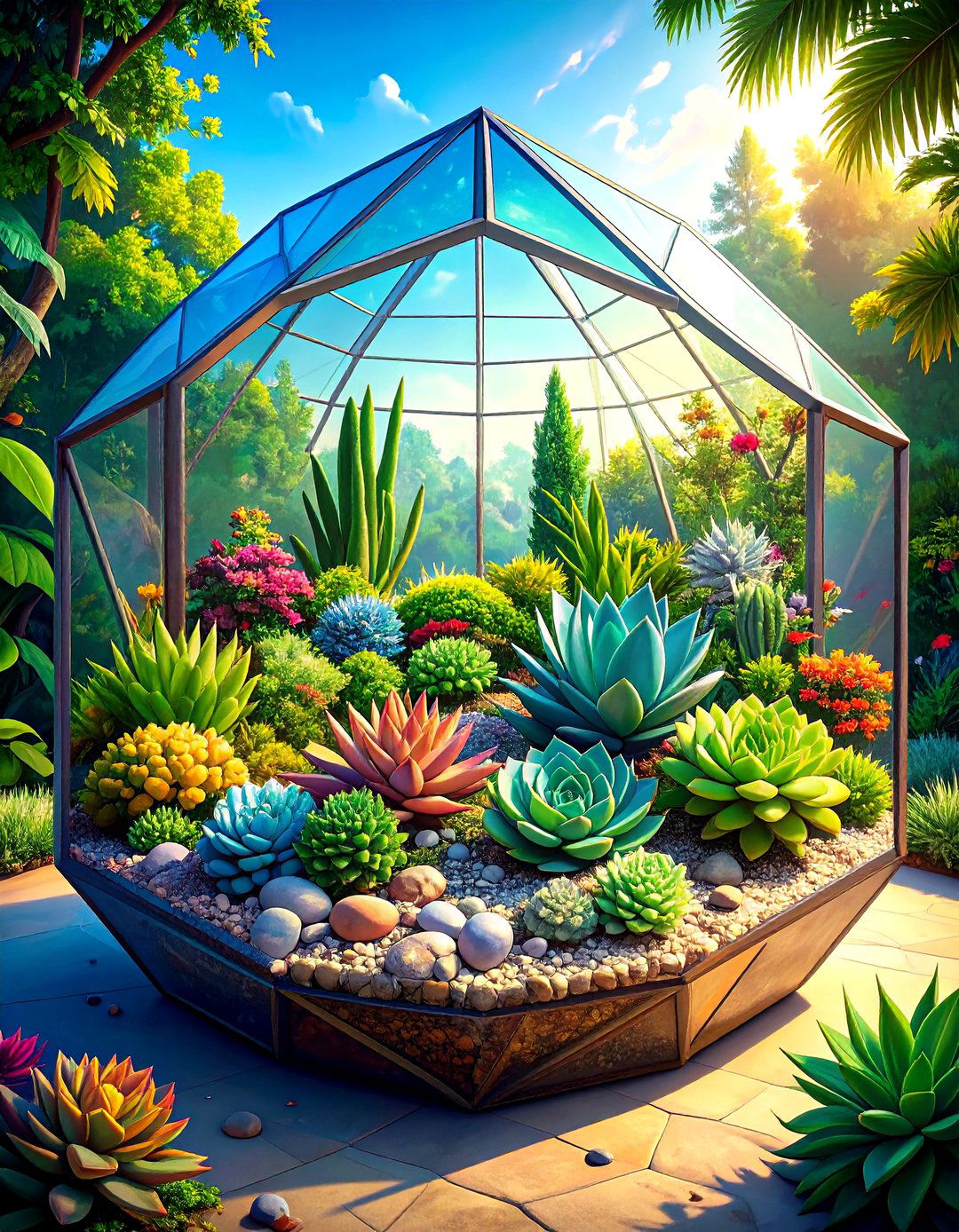
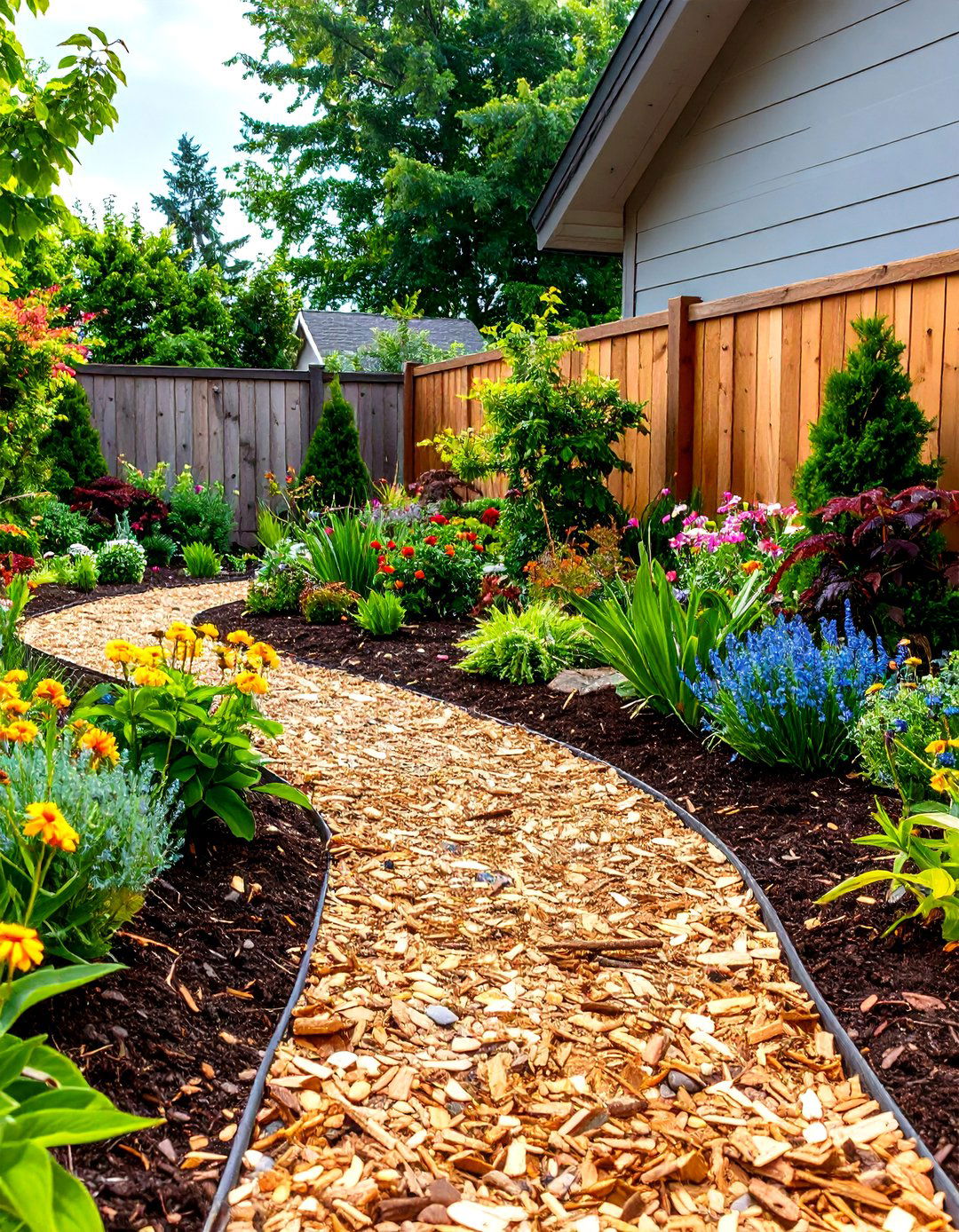



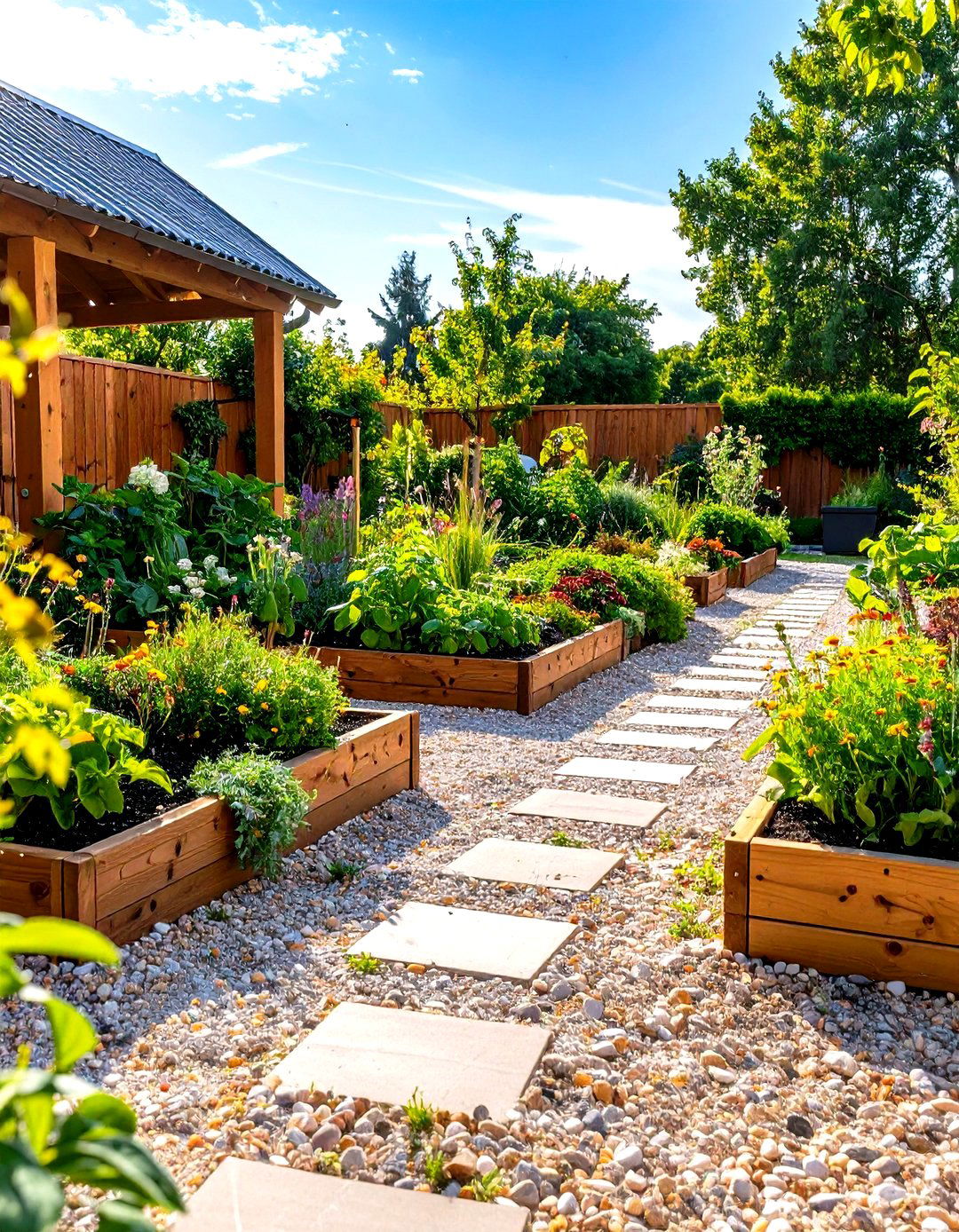
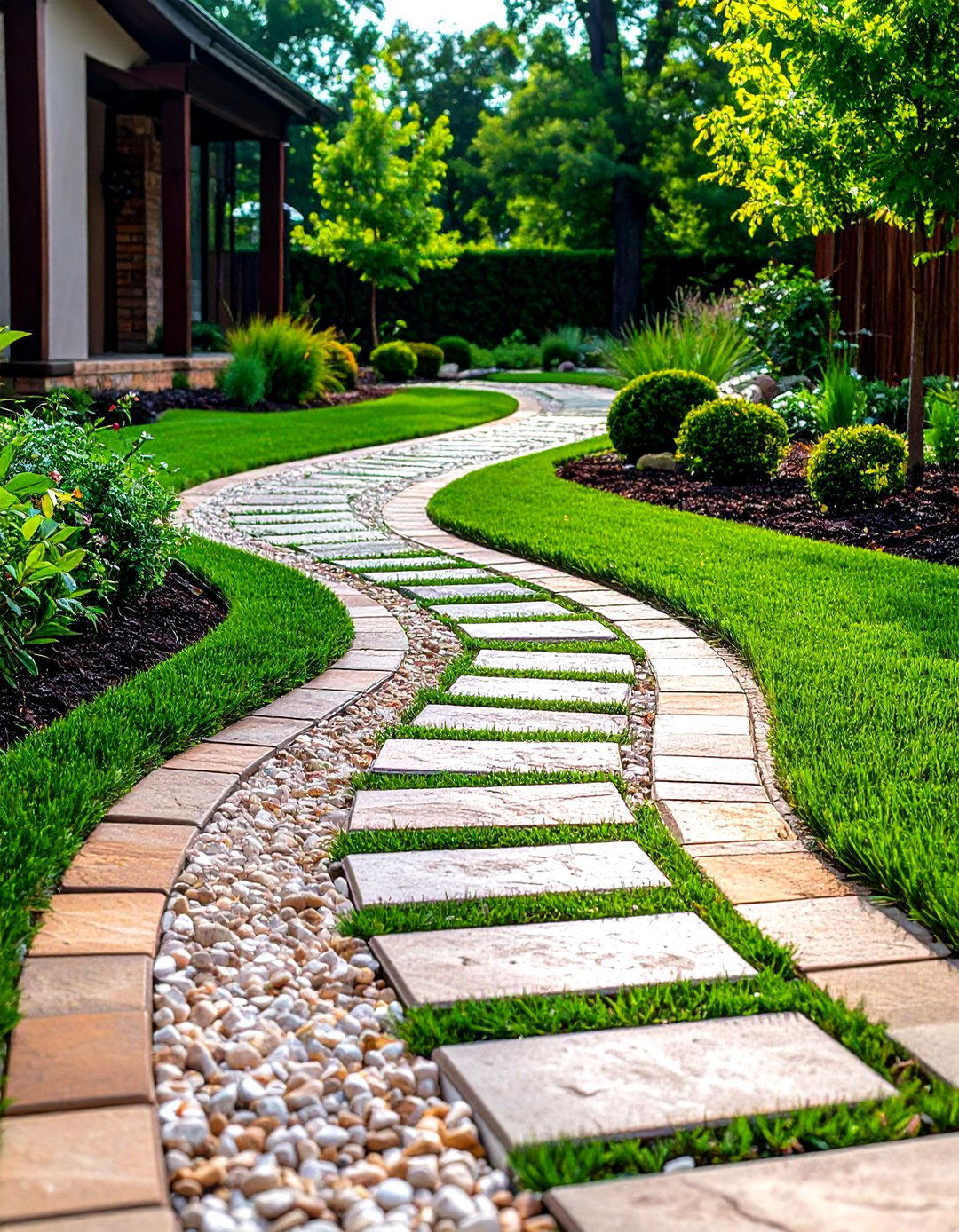
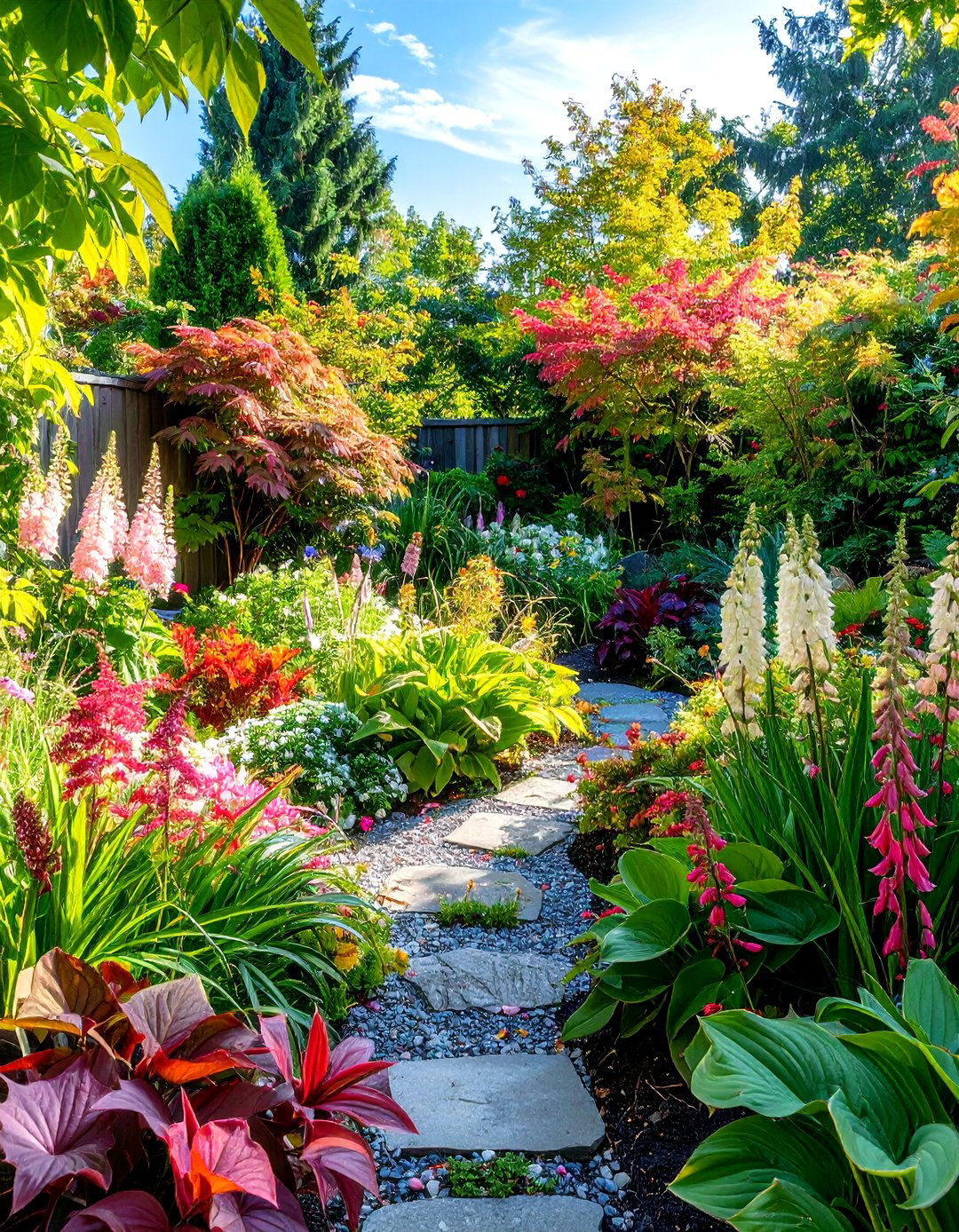
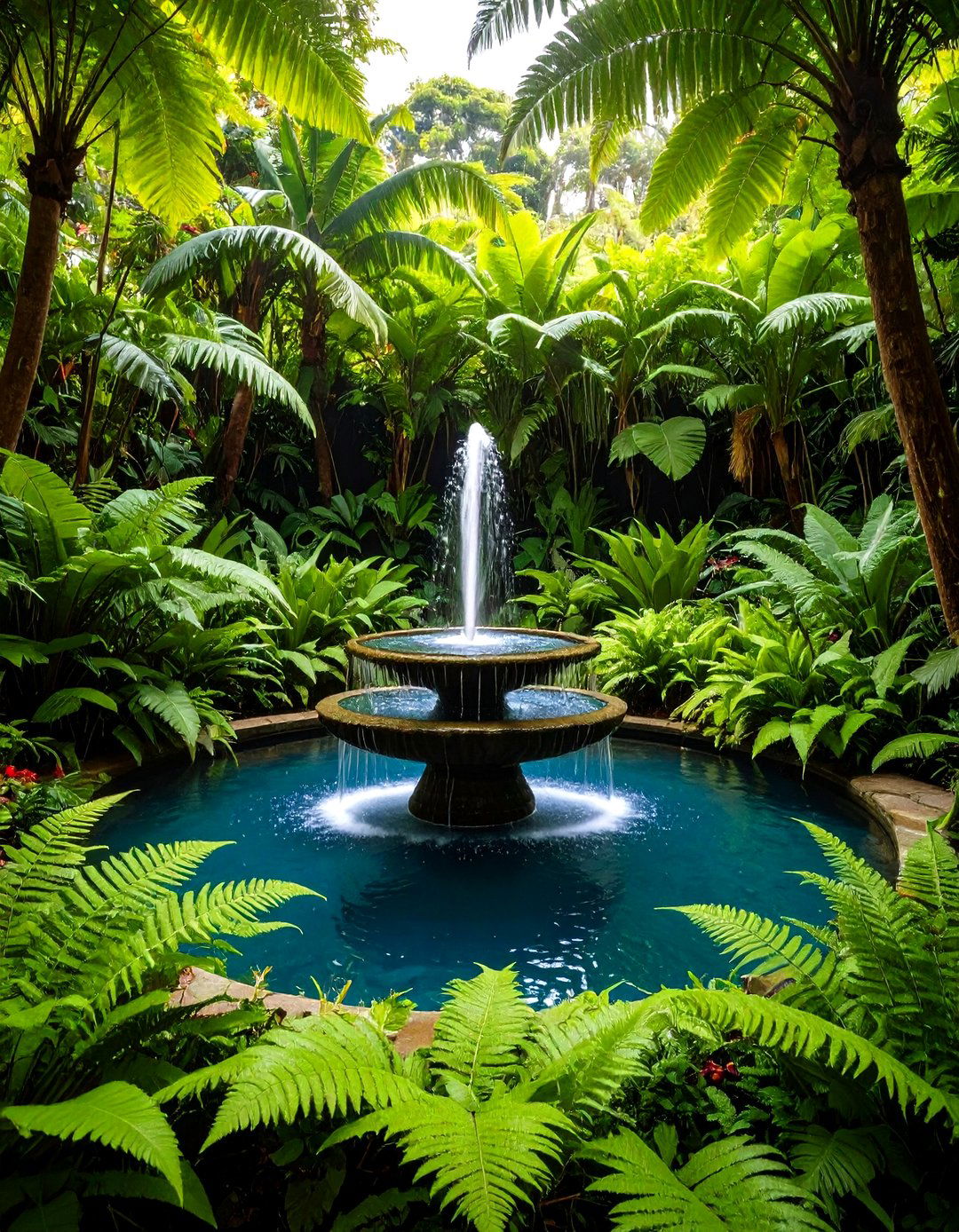
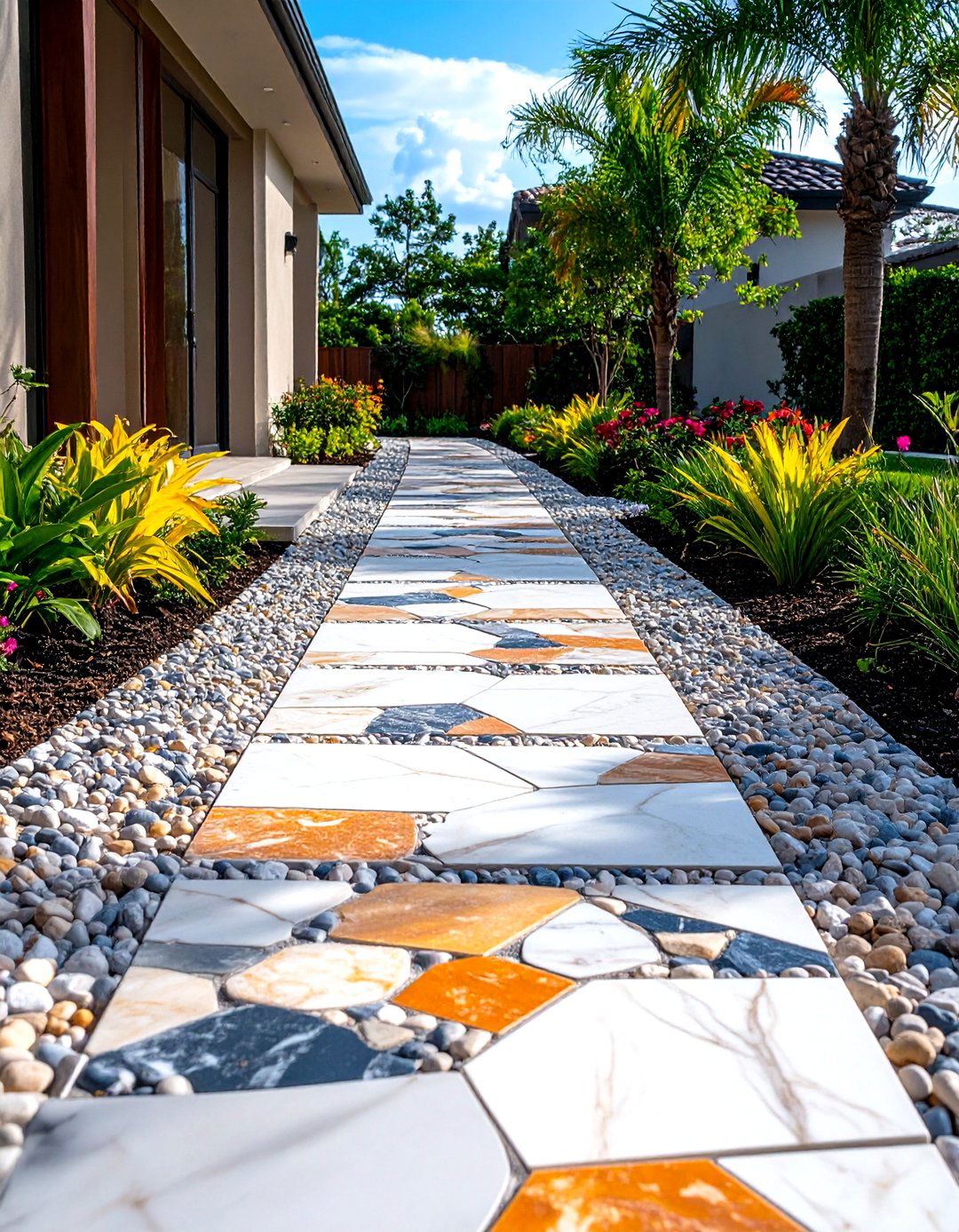
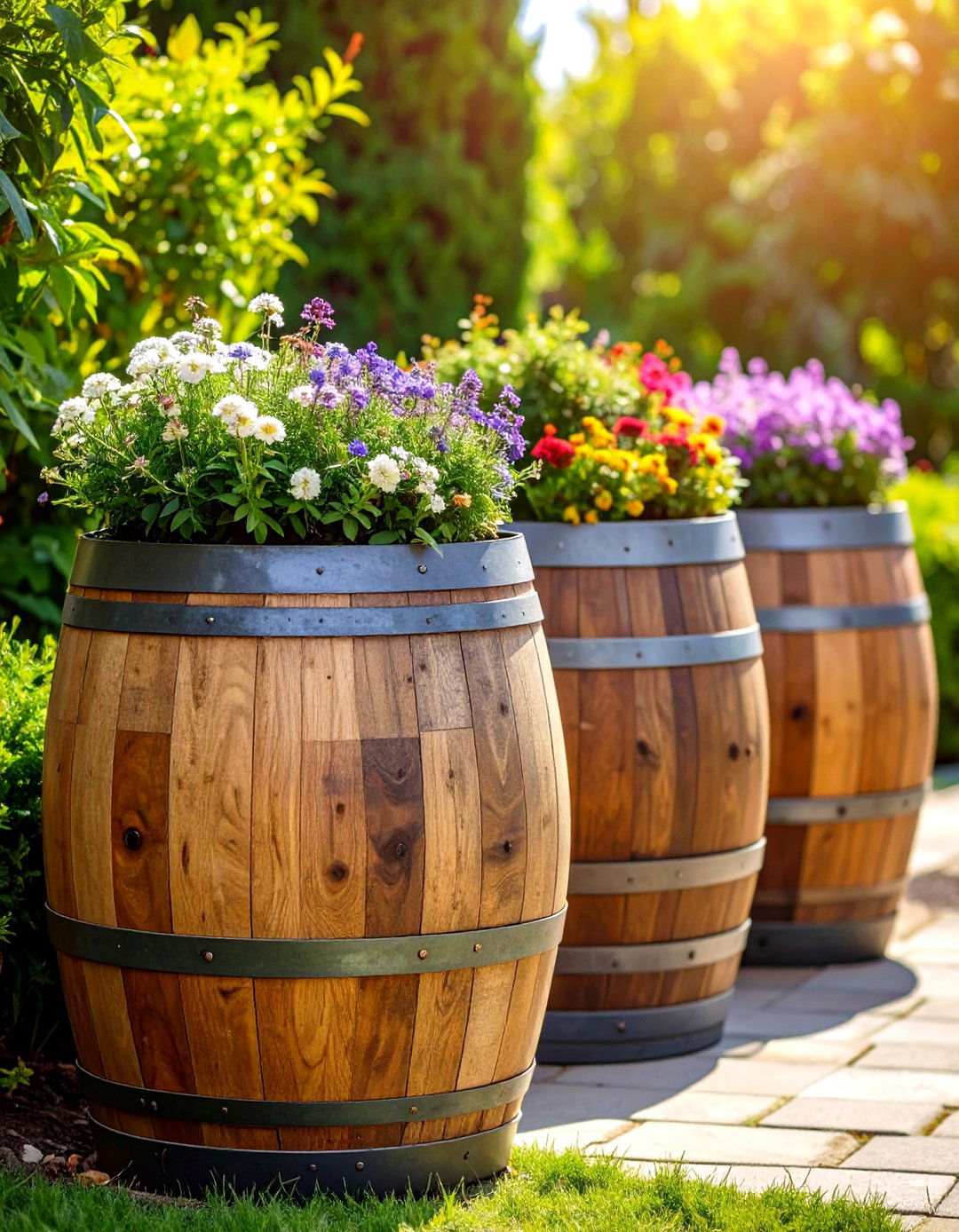

Leave a Reply